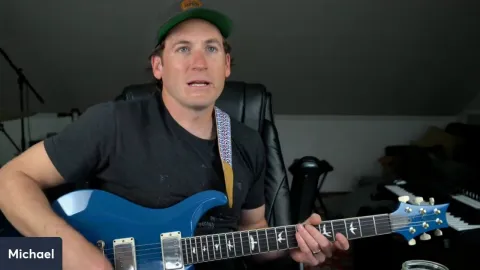First video is glitchy so trying again
Michael is the one who runs this whole thing!


In this masterclass, Michael Palmisano dives deep into the concept of voice leading using triads and explores how musicians can apply these concepts practically on the guitar. Michael starts by demonstrating a 1-4-5 chord progression in the key of E, using major scales and harmonized triads to lay the foundation for the session. He breaks down the construction of each chord within the progression and emphasizes the importance of making these chords and scales tangible and usable for guitarists. Through his playing, Michael showcases how to arpeggiate through the progression, focusing on maintaining the closest moves between chords to facilitate smooth voice leading.
As the masterclass progresses, Michael shifts the focus towards the practical application of these theoretical concepts. He encourages participants to create a loop based on the 1-4-5 progression in E, and then arpeggiate along with the loop, highlighting the significance of choosing specific string sets to start on. This approach helps in visualizing the fretboard more efficiently and understanding how to voice lead effectively across it. Michael provides examples of playing the progression on different string sets, demonstrating how to navigate the guitar neck seamlessly while maintaining the harmonic context of the music.
Furthermore, Michael discusses the broader implications of voice leading beyond guitar playing, touching upon its importance in arranging and songwriting. He delves into how voice leading can influence the overall sound of a band or ensemble, ensuring that all instruments align harmonically for a cohesive sound. The masterclass concludes with Michael inviting questions from participants, reinforcing the key takeaways, and encouraging them to practice voice leading within their playing. He emphasizes the value of understanding and applying voice leading concepts to enhance musicality and create more engaging and harmonious arrangements.
First video is glitchy so trying again